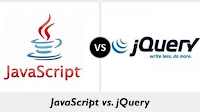- First call a ajax function with parameters "/_api/Web/Lists/GetByTitle(ListName)/Items?$orderby=Id desc&$top=1". Now you will get the latest added "Id".
- Now Divide the Id returned by the ajax by 5000. (Id/5000) So that you will get a result of how many times you need to perform the ajax.
- Now you can perform the ajax function repeatedly be filtering every 5000 items, with filter like, $filter=Id ge 0 and Id le 5000, $filter=Id ge 5000 and Id le 10000, ........ , etc.
- You can have a foreach loop to perform the ajax repeatedly with a dynamic filter, $filter=Id ge (5000*LoopValue) and Id le (5000*(LoopValue+1)).
Also make sure, the ajax to have async:true, to avoid performance issue. You can store the returned data in array and perform further actions, so that you could store more than 5000 data to perform your functions.
var url = _spPageContextInfo.webAbsoluteUrl + "/_api/web/lists/getbytitle('DocumentList')/items?$select=customerID&$top=1000";
var response = response || []; // this variable is used for storing list items
function GetListItems(){
return $.ajax({
url: url,
method: "GET",
headers: {
"Accept": "application/json; odata=verbose"
},
success: function(data){
response = response.concat(data.d.results);
if (data.d.__next) {
url = data.d.__next;
GetListItems();
}
$.each(response, function(index, item) {
arrayCustomerID[index] = item.customerID;
});
},
error: function(error){
}
});
}










































